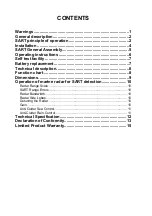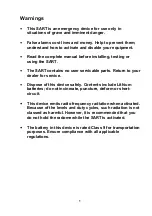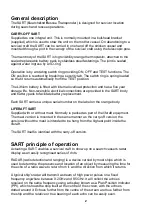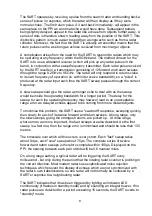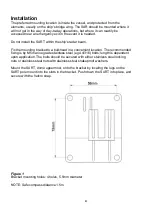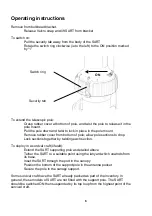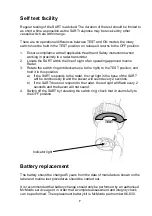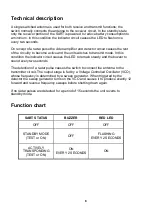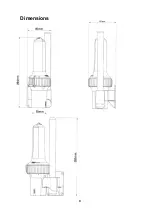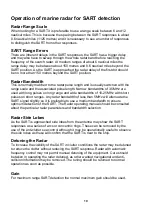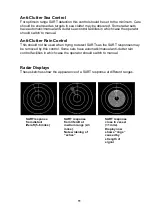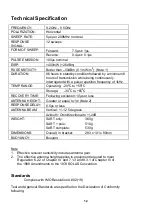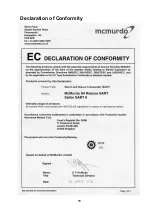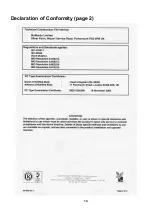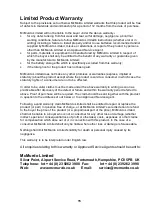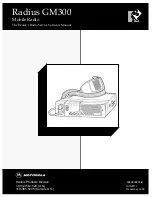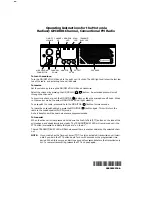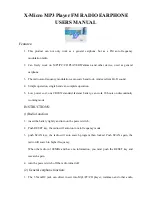
3
The SART operates by receiving a pulse from the search radar and sending back a
series of pulses in response, which the radar will then display as if they were
normal echoes. The first return pulse, if it sent back immediately, will appear in the
same place on the PPI as a normal echo would have done. Subsequent pulses,
being slightly delayed, appear to the radar like echoes from objects further away. A
series of dots is therefore shown, leading away from the position of the SART. This
distinctive pattern is much easier to spot than a single echo such as from a radar
reflector. Moreover, the fact that the SART is actually a transmitter means that the
return pulses can be as strong as echoes received from much larger objects.
A complication arises from the need for the SART to respond to radars which may
be operating at any frequency within the 9GHz band. The method chosen for the
SART is to use a wideband receiver (which will pick up any radar pulses in the
band), in conjunction with a swept frequency transmitter. Each radar pulse received
by the SART results in a transmission consisting of 12 forward and return sweeps
through the range 9.2GHz to 9.5GHz. The radar will only respond to returns close
to its own frequency of operation (ie. within its receive bandwidth), so a "pulse" is
produced at the radar input each time the SART sweep passes through the correct
frequency.
A slow sweep would give the radar a stronger echo to deal with as the sweep
would be inside the operating bandwidth for a longer period. The delay for the
sweep to reach the operating frequency may however lead to an unacceptable
range error, as delayed echoes appear to be coming from more distant objects.
To minimise this problem, the SART uses a "sawtooth" response, sweeping quickly,
then slowly for each of its twelve forward and return sweeps. At long range, only
the slow sweeps, giving the strongest returns, are picked up
.
At close range,
where errors are more important, the fast sweeps are also detected. As the first
sweep is a fast one, then the range error is minimised and should be less than 150
metres.
The timescale over which all this occurs is very short. Each "fast" sweep takes
about 0.4
µ
s, each "slow" sweep about 7.5
µ
s. The complete series of twelve
forward and return sweeps is therefore complete within 100
µ
s. Displayed on the
PPI, the spacing between each pair of dots will be 0.6 nautical miles.
On a long range setting, a typical radar will be triggering the SART every
millisecond - but only during the period that the rotating radar scanner is pointing in
the correct direction. Most modern radars use sophisticated noise rejection
techniques, which prevent the display of echoes which are not synchronized with
the radar's own transmissions, so one radar will not normally be confused by a
SART's response to a neighbouring radar.
The SART indicates that it has been triggered by lighting an indicator LED
continuously (it flashes in standby mode) and by sounding an integral buzzer. If no
radar pulses are detected for a period exceeding 15 seconds, the SART reverts to
"standby" mode.
Summary of Contents for S4 Rescue SART
Page 1: ...S4 RESCUE SART Search And Rescue Transponder User Manual ...
Page 11: ...9 Dimensions ...
Page 15: ...13 Declaration of Conformity ...
Page 16: ...14 Declaration of Conformity page 2 ...
Page 18: ...16 User Notes ...


